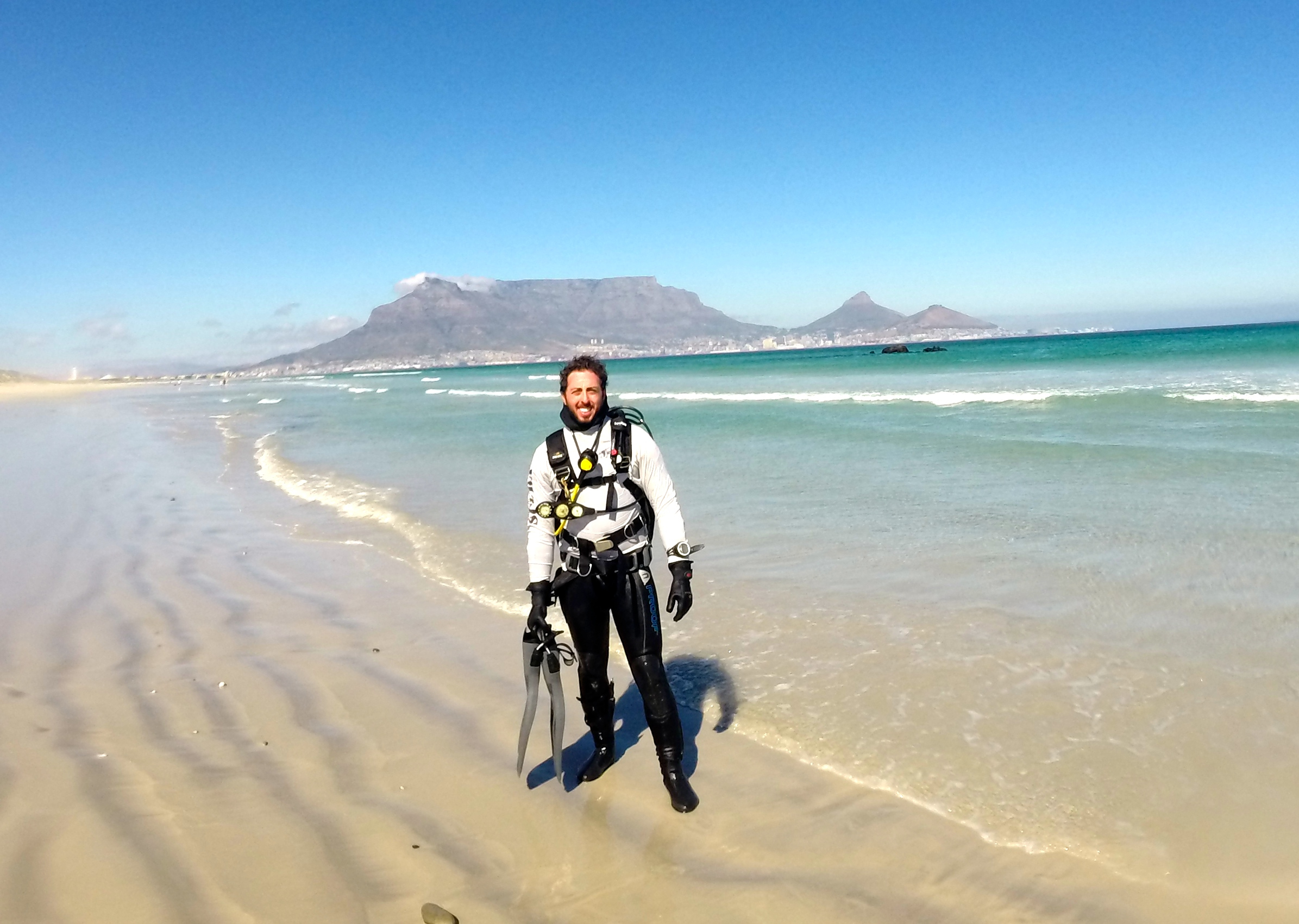Alumnus goes under the sea, uncovers history

On a plane ride back to SUNY New Paltz to begin his junior year, Jeremy Borelli ’12 (Anthropology) read an article about archaeological excavations of the pirate Blackbeard’s flagship, the Queen Anne’s Revenge. Borrelli, then a member of the men’s swim team, had two passions: archaeology and swimming.
“I realized that you can do archaeology underwater,” said Borrelli. “It was the best way to combine my passions.”
 Borrelli, who defended his thesis in May as a graduate student in the Maritime Studies Program at East Carolina University, has already added several noteworthy achievements to his resume, including three years with the project that first sparked his interest in the field—the Queen Anne’s Revenge Shipwreck Project at the Conservation Laboratory in Greenville, N.C. He has participated in field excavations of the Queen Anne’s Revenge, and recovered several large artifacts such as cannons and rigging.
Borrelli, who defended his thesis in May as a graduate student in the Maritime Studies Program at East Carolina University, has already added several noteworthy achievements to his resume, including three years with the project that first sparked his interest in the field—the Queen Anne’s Revenge Shipwreck Project at the Conservation Laboratory in Greenville, N.C. He has participated in field excavations of the Queen Anne’s Revenge, and recovered several large artifacts such as cannons and rigging.
For his master’s thesis research, Borrelli spent three months working with Jaco Boshoff, the curator of maritime archaeology at the Iziko South African Museum archaeology lab. Through his association with Boshoff, Borelli joined a field team recovering items from what is believed to be the wreck of the Portuguese slave ship, Sao Jose, which sank in 1794 carrying a large consignment of human cargo off the coast of Cape Town.
The wreck is part of the African Slave Wrecks Project, established in partnership with Iziko Museums, George Washington University, the National Park Service, South African Heritage Resources Agency and the Smithsonian. The project developed as an extension of Boshoff’s research into the Dutch slave ship, Meermin, which sank in 1766.
The goal for the field season was to map any new features and recover a pulley block, part of the ship’s rigging, for the Smithsonian. Artifacts such as the pulley block, as well as the location of the ship and the historical record, are expected to confirm the ship’s identity. Borrelli said the Sao Jose stands to be a “very significant shipwreck” in the African Slave Wrecks Project.
“It’s an investigation, and that’s what I like about it,” said Borrelli. “You can’t say anything for certain until you have the research to back it up, and that’s something I learned at New Paltz – that process of designing a research strategy, carrying it out and writing up your results.”
Borrelli said the common thread among all of the projects he has been involved in is the “ability to think critically and tackle complex problems in a safe, effective and ethically sound manner,” skills he attributes to the liberal arts education he received at New Paltz.
“The value of my liberal arts education, within my field, has been to provide me with the capacity and skill set to take maritime cultural material, examine it using unique and often technical methods, and make it applicable within a wider social context. No matter what, people value culture, heritage and history. My liberal arts education taught me how to take the technical aspects of my job and apply them to make this invaluable resource available to those who want to share in the experience.”
Copy adapted from the spring 2015 College of Liberal Arts & Sciences e-newsletter
